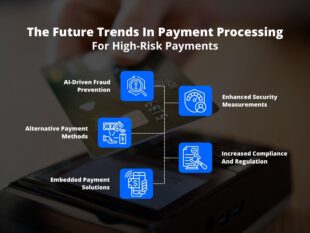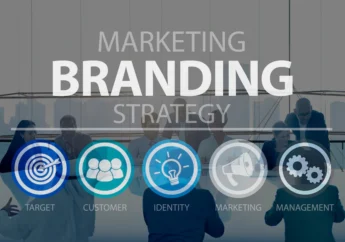Marketing Presentations: What are the Skills Needed for Maximizing Success Rates?
by Abdul Aziz Mondal Marketing Published on: 30 September 2021 Last Updated on: 18 October 2024

Marketing presentations and marketing campaigns are interrelated but separate concepts. Even though you will find several posts on the internet that use the terms interchangeably. A sound knowledge base is essential for marketing presentations.
Hence, let’s start with a clear definition that adequately conveys what marketing presentations are. Subsequently, how they differ from marketing campaigns or strategies.
What is a Marketing Presentation?
A marketing presentation is an audio-visual demonstration of proposed marketing strategies and ideas. It’s the initial pitch that a marketing team uses to explain the potential of their ideas to the client. In the case of in-house marketers, their company’s executive decision-makers.
Marketing Presentations Have a Different Target Audience
Marketing presentations cater to the client instead of the target audience. In other words, the entire marketing presentation is planned to impress that client. That part comes later and only if their marketing pitch is successful.
Essential questions that any marketing presentation should be designed to answer in detail are as follows:
- Who is the target audience for this particular ad campaign?
- Which core ideas will be used to catch the target audience’s attention?
- Why will the proposed ideas appeal to their (client’s) customers?
- How will those ideas be turned into effective marketing strategies?
- What kind of actionable customer insights can the client hope to get from the campaign?
- What is the estimated budget for this proposed campaign?
- How much ROI can the client expect by investing in this marketing campaign?
Despite marketing presentations and campaigns being two different concepts, they are interconnected. The former acts as a natural precursor for the latter. Unless a marketer manages to impress the client or the company executives, they cannot start working on the campaign.
With that, we have a clear understanding of the differences between these two distinct marketing concepts. Hence, it is time to take a brief look at some of the critical skills necessary for successful marketers today.
Proficiency with Infographics
Marketing presentations are always heavily dependent on the use of infographics. Therefore, proficiency in infographics is an essential requirement for being successful as a marketer in any sector. Look at this post on the Emerson College Blog, titled Infographic: Who Is the Modern Marketer and What Do They Do?
Notice that they have cleverly used a simple infographic in the post to precisely explain who the modern marketer is. The infographics also tell us, what is expected of them, what skills they need, etc..
Similarly, a successful marketing presentation must have suitable infographic representations incorporated in it so that they serve to:
- Deliver information in a more visually attractive manner, which is retained for a much longer period
- Rid the presentation of boredom that naturally comes with too many numbers and letters on the screen
- Deliver necessary information and messages by simplifying the complex parts into easily comprehensible infographic figures.
- Catch the audience’s attention between slides and keep them engaged throughout the presentation.
- Provide visual directions to the audience so they can follow the entire presentation.
- Provide more emphasis to the whole pitch via visual cues and progressive logic.
The portrayal of Confidence as a Soft Skill.
Every professional marketer looks and exudes confidence about them while giving a presentation. Does that mean they are never tense? That would be an impossible conclusion to draw. Of course, even the most seasoned marketer will sometimes feel the tension of delivering in front of a crowd. However, the difference is in how they handle that tension and how it never shows during the presentation.
The Checklist For Soft-Skill Demonstration
As you can probably guess, the natural soft skill here is to portray that sense of confidence. This is key during the delivery.
Experienced marketers who have delivered similar presentations plenty of times will naturally be more satisfied than someone new. Still, even marketers with little experience can at least appear confident in their delivery with proper training.
In case you have an upcoming presentation, just go through the following tips centred around developing this particular soft skill.
- Gain true confidence by practising a few mock sessions with your team ahead of the big presentation.
- Do not attempt to follow a script word-for-word since it’s a marketing presentation, not an audition!
- Follow your presentation’s general direction without fussing over the missed details.
- Refrain from trying to review your words as you speak them out; that will divert your attention, leading to even more mistakes.
- When you review your sentences, do not scold yourself mentally for each little mistake or stammer while delivering.
- Take cues from the presentation screen/board; you created it to remind you about the forgotten bits instantly. Present presentations short when you are new, and make them shorter even if you are a pro; people have short attention spans.
- Stay genial and be ready to answer questions from the audience at times; it only shows that you have managed to engage them.
- Learn and practice assuming confident postures to present confident body language during any marketing presentation.
- Take a few long and slow breaths right before you take the stage to alleviate anxiety.
Creating Likeability is an Invaluable Presenter’s Skill
Marketing is about creating relatable content, and a marketing presentation is similar. Establishing relatability with the few people present as your audience during the presentation will be much easier than proving the same with thousands of potential target customers you have ever met!
Now, a crucial difference between the two is that it is your created content that establishes relatability with potential customers when you are marketing to them.
Doing so can be an extremely challenging task for people who have needed more training. There is always the risk of coming off as either too friendly for your over-eagerness in establishing a rapport with the audience or too rude in your attempt to stay humble and quiet. Striking the perfect balance between the two does require extensive training, but the following tips should help you improve nonetheless:
- Always introduce, interact, and conclude your presentations with a smiling face.
- Invite interactions from the audience by offering them a few cues to voice their opinion about any specific part of your presentation.
- Keep a relaxed demeanor and posture throughout the presentation to look approachable.
- When there is an interaction, only interrupt them once they have finished saying what they wish to; they are clients and not students.
- Keep your presentations small to medium length at most, allowing the extra time necessary to accommodate audience interactions within the approximated timeframe.
Likeability is a more critical factor when pitching your marketing ideas to potential clients, as they do not need to relate to marketing content. They are not looking to buy the product but the ideas you are trying to sell to them. Naturally, convincing people becomes much easier if they like the marketer personally and see potential in their proposed marketing strategies professionally.
Matching Expressions: A Better Skill than Constant Smiling?
It is often taught in marketing school that the presenter must always maintain a smile on their face. This is the established norm, and there is no denying that people tend to like smiling faces more than grim ones. However, a few evident issues with this strategy have made modern marketers reconsider its validity in all circumstances.
First and foremost, the very action of forcibly keeping a smile on our face during an entire presentation distracts us from concentrating entirely on the subject of the presentation itself. Smiling can turn into muscle memory with time and practice, bringing us to our second issue: what if the content isn’t something a smile should accompany?
Example
For example, if you are pitching your marketing ideas to a client who sells specialized respirators to hospitals and clinics, it would be downright rude and insensitive to smile while trying to explain how a high rate of COVID infections among hospital staff in a target area can be used to market their respirators in that region.
You could smile almost reflexively at the wrong time, which would not leave a good impression. Finally, people who smile unfalteringly throughout a presentation may seem artificial and dishonest to their client because it does not look or feel natural.
Due to these shortcomings of the “always smile” rule, modern marketers adopt the simple strategy of matching their expressions to the content itself. It looks and feels genuine and is much more accessible to pull off than to hold a robotic smile throughout the presentation.
You will still need to smile often and maintain a pleasant atmosphere, especially during introductions and interactions, but match your expressions to the content for a more natural delivery.
For example, when that statistic about hospital staff getting infected at a higher-than-normal rate comes up, it is best to keep your expression neutral, if not grave. Also, this creates the opportunity to present your ideas as solutions with a brighter expression.
Do Not Give Up
This is not just about keeping your marketing spirits alive, mind you; it is an actual strategy to land a client with your marketing presentation.
Human beings, by nature, tend to prefer known faces, which holds truer in business than outsiders realize. Even if you did not get the marketing contract from a client the last time, do not give up on them by any means.
Return with a new proposal when the opportunity offers itself, and you will have a higher chance of landing it the next time. Also, never let your behavior towards a potential client change because you have not yielded to landing a gig with them.
Word of mouth plays a significant role, and it is ideal if people only have positive things to say about you and your presentations. It will create opportunities and rapport for the future, even if that connection does not happen just yet.
In general, several skills considered necessary for marketing are also considered essential for presenters who stand at the forefront of any marketing team. However, if you are not exceptionally comfortable delivering client presentations, there is something else to consider.
You do not necessarily have to be proficient in client/executive/customer presentations to work in marketing. It is an essential skill, and you may need it later in your career to progress, but presenting is optional for all marketing team members.
There are indeed people who are exceptionally good at public speaking, delivering interactive presentations, and keeping the audience engaged. Still, they are not the only people who work in marketing either. Whether you are the artist, the content creator, or the statistician, they are each critical components of a smooth-functioning marketing team.
Additional Reading:



































































































